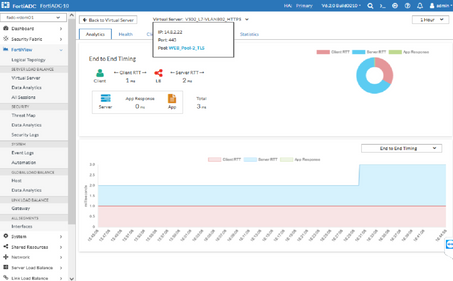- Support Forum
- Knowledge Base
- Customer Service
- Internal Article Nominations
- FortiGate
- FortiClient
- FortiADC
- FortiAIOps
- FortiAnalyzer
- FortiAP
- FortiAuthenticator
- FortiBridge
- FortiCache
- FortiCare Services
- FortiCarrier
- FortiCASB
- FortiConverter
- FortiCNP
- FortiDAST
- FortiData
- FortiDDoS
- FortiDB
- FortiDNS
- FortiDLP
- FortiDeceptor
- FortiDevice
- FortiDevSec
- FortiDirector
- FortiEdgeCloud
- FortiEDR
- FortiEndpoint
- FortiExtender
- FortiGate Cloud
- FortiGuard
- FortiGuest
- FortiHypervisor
- FortiInsight
- FortiIsolator
- FortiMail
- FortiManager
- FortiMonitor
- FortiNAC
- FortiNAC-F
- FortiNDR (on-premise)
- FortiNDRCloud
- FortiPAM
- FortiPhish
- FortiPortal
- FortiPresence
- FortiProxy
- FortiRecon
- FortiRecorder
- FortiSRA
- FortiSandbox
- FortiSASE
- FortiSASE Sovereign
- FortiScan
- FortiSIEM
- FortiSOAR
- FortiSwitch
- FortiTester
- FortiToken
- FortiVoice
- FortiWAN
- FortiWeb
- FortiAppSec Cloud
- Lacework
- Wireless Controller
- RMA Information and Announcements
- FortiCloud Products
- ZTNA
- 4D Documents
- Customer Service
- Community Groups
- Blogs
- Fortinet Community
- Knowledge Base
- FortiADC
- Troubleshoot Tip: Decrypt FrontEnd and BackEnd tra...
- Subscribe to RSS Feed
- Mark as New
- Mark as Read
- Bookmark
- Subscribe
- Printer Friendly Page
- Report Inappropriate Content
Created on
02-07-2023
10:31 PM
Edited on
12-09-2025
03:19 AM
By
![]() Jean-Philippe_P
Jean-Philippe_P
| Description |
This article explains a way to decrypt traffic on connections to VS working in Layer-7, to analyze the traffic hitting FortiADC and the traffic sent to Real Servers.
Topology: RS-A1 Client (Internet) -> FortiADC ->| RS-A2.
|
| Scope |
Compare the traffic received by FortiADC and the traffic sent to the Real Servers. |
| Solution |
Step 1. Disable WAF security on the configuration of the Virtual Server.
Step 2. Prepare the next debug by filtering the name of the Virtual Server.
diagnose debug module httproxy set-filter vsname=<VirtualServer_name> diagnose debug module httproxy ssl_ae_info diagnose debug module ssl-of-httproxy all set diagnose debug enable
Step 3. Prepare the packet capture in GUI filtering the FrontEnd interface (e.g., WAN interface) and BackEnd interface (e.g., LAN interface).
Suggestion: It is possible to filter the public Client IP-address on the FrontEnd capture and the private RealServer IP-addresses in the BackEnd capture using the command below:
diagnose debug module httproxy set-filter srcip=<Test Client's IP address>
For example:
Enable the Packet Captures.
Step 4. From the Client, get access to the Virtual Server.
Try to do 2 or 3 connections to get more samples. The CLI of FortiADC will start to output a string of characters.
Step 5. Stop the packet capture and download them.
Step 6. Open the packet capture with Wireshark. From Wireshark, go to Edit -> Preferences. It will open the Wireshark Preferences. Select ‘OK'.
Traffic will be decrypted.
|
The Fortinet Security Fabric brings together the concepts of convergence and consolidation to provide comprehensive cybersecurity protection for all users, devices, and applications and across all network edges.
Copyright 2025 Fortinet, Inc. All Rights Reserved.





